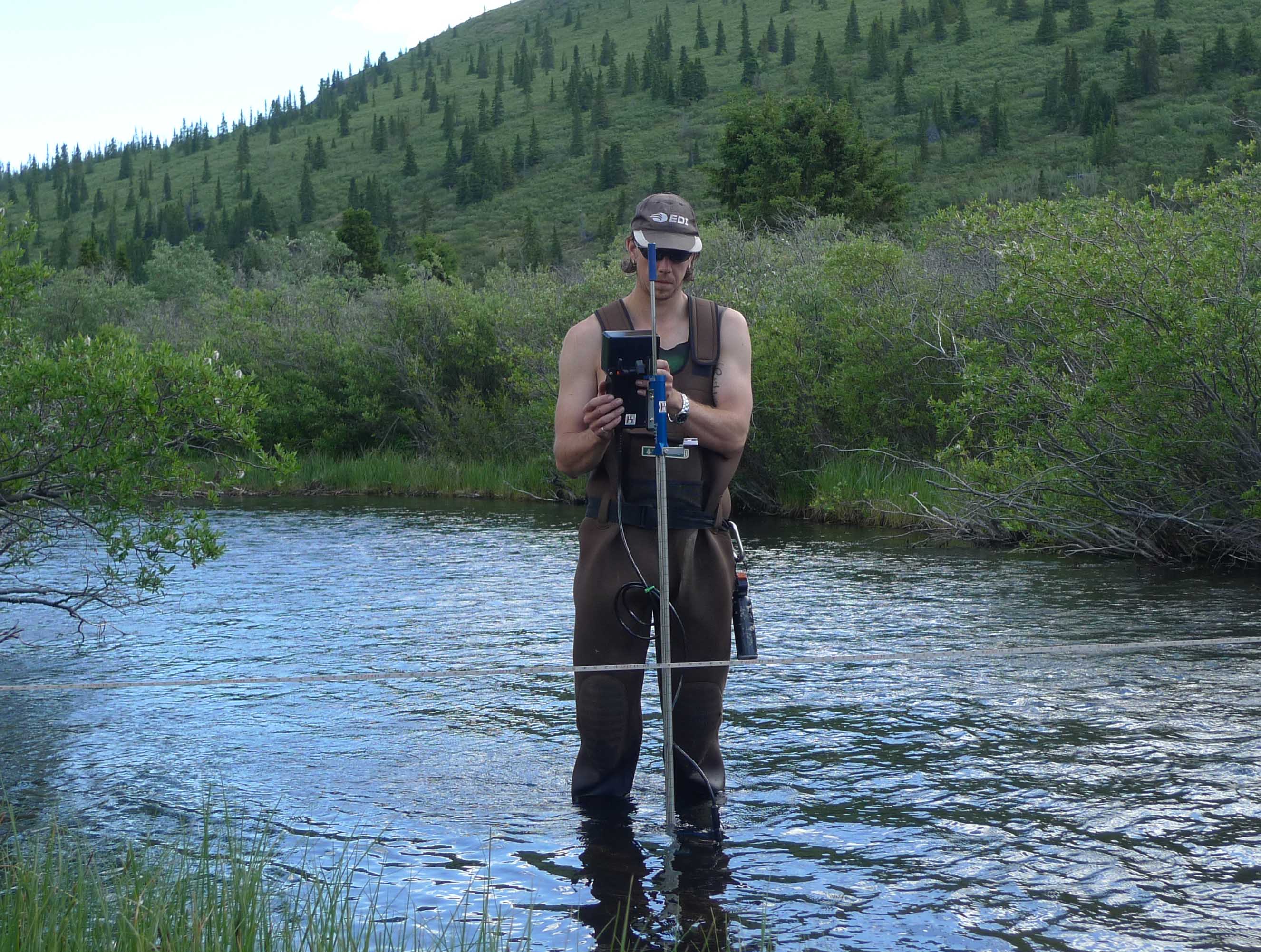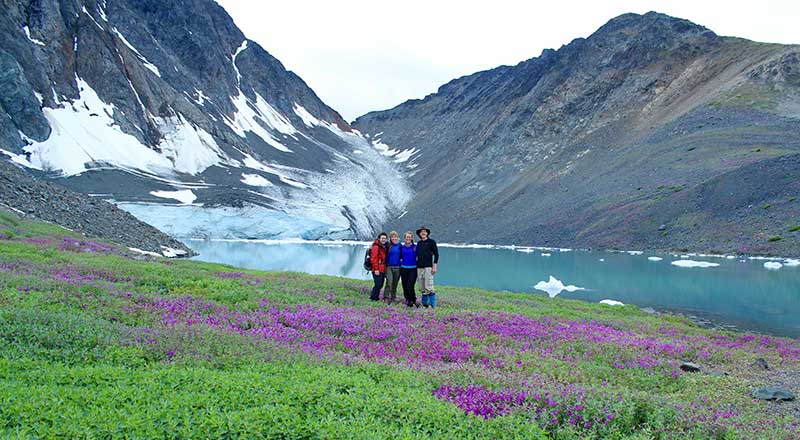Studying a changing climate at one of McMaster’s northernmost labs

BY Michelle Donovan
September 6, 2016
As the world warms, the impact of climate change in Canada’s far north has been dramatic.
And a team of grad and undergrad students working at McMaster’s hydrology research observatory, nestled in the Yukon’s Wolf Creek research basin, is witnessing it first hand.
Working under some of the world’s harshest conditions – blizzards, sub-zero temperatures, torrential rain and hail—they are documenting the changing world, one sample at a time. They test the water, measure depth and distribution of snow, analyze changes in vegetation, conduct isotope analysis, and look for other markers of change in the landscape.
 Nadine Shatilla at the top of the north facing slope of Granger Basin carrying snow survey equipment.
Nadine Shatilla at the top of the north facing slope of Granger Basin carrying snow survey equipment.
Their camp is located 20 kilometres south of Whitehorse, where just getting there requires meticulous planning. The researchers can only go in by helicopter, snow machine or ATV, depending on the season and the road conditions.
Their lab equipment includes items such spark plugs and fuel. Simple staples like coffee and soup take on a new importance.
 Using a FlowTracker to measure discharge of Wolf Creek.
Using a FlowTracker to measure discharge of Wolf Creek.
The conditions are tough, but the field experience is remarkable. This is adventure science in its purest form.
“We work in extreme conditions,” says Nadine Shatilla, a PhD candidate in the School of Geography & Earth sciences, who recently returned from the Yukon and is set to go back in a few weeks’ time.
“Sometimes I wonder how could it be minus-5 at night, then 15 degrees, then hot, then we experience hail. All in one day,” she laughs.
 Renee Lemmond holding the scale for snow density measurements at the plateau site in Granger Basin (main study area) on a beautiful day in late April.
Renee Lemmond holding the scale for snow density measurements at the plateau site in Granger Basin (main study area) on a beautiful day in late April.
“Our work is really controlled by the environment,” says Heather Bonn, a hydrology grad student. “In the mountains, you get a really good perspective of the weather. You can see a snow storm in the distance, which then misses you altogether. Being able to see the variability from one peak to the next is really incredible.”
The weather is one factor. Wildlife is another. Caribou, fox, moose, wolverine and bear sightings are commonplace.
Just ask Ryan Rolick, another grad student conducting hydrology research in the basin. He has come face-to-face with an irritated bull moose and was awakened one night to the sounds of loud snorts outside his tent.
“For a few terrifying moments, I thought it was bear. But then I saw the tiny feet on the tent platform and realized it was a porcupine which just scampered off,” he laughs.
 A very large porcupine, one of the many wild residents encountered near the research site.
A very large porcupine, one of the many wild residents encountered near the research site.
The team is working under the supervision of Sean Carey, head of the McMaster Water Hydrology Group and a professor of geography & earth sciences. He has conducted research in Canada’s north for the better part of 20 years, overseeing the research observatory. It is one of a handful in the world and the only to collect such comprehensive, long-term data in a cold, alpine environment.
 The group (L-R) Nadine, Renée, Heather, Ryan on a team bonding hike during a day off.
The group (L-R) Nadine, Renée, Heather, Ryan on a team bonding hike during a day off.

